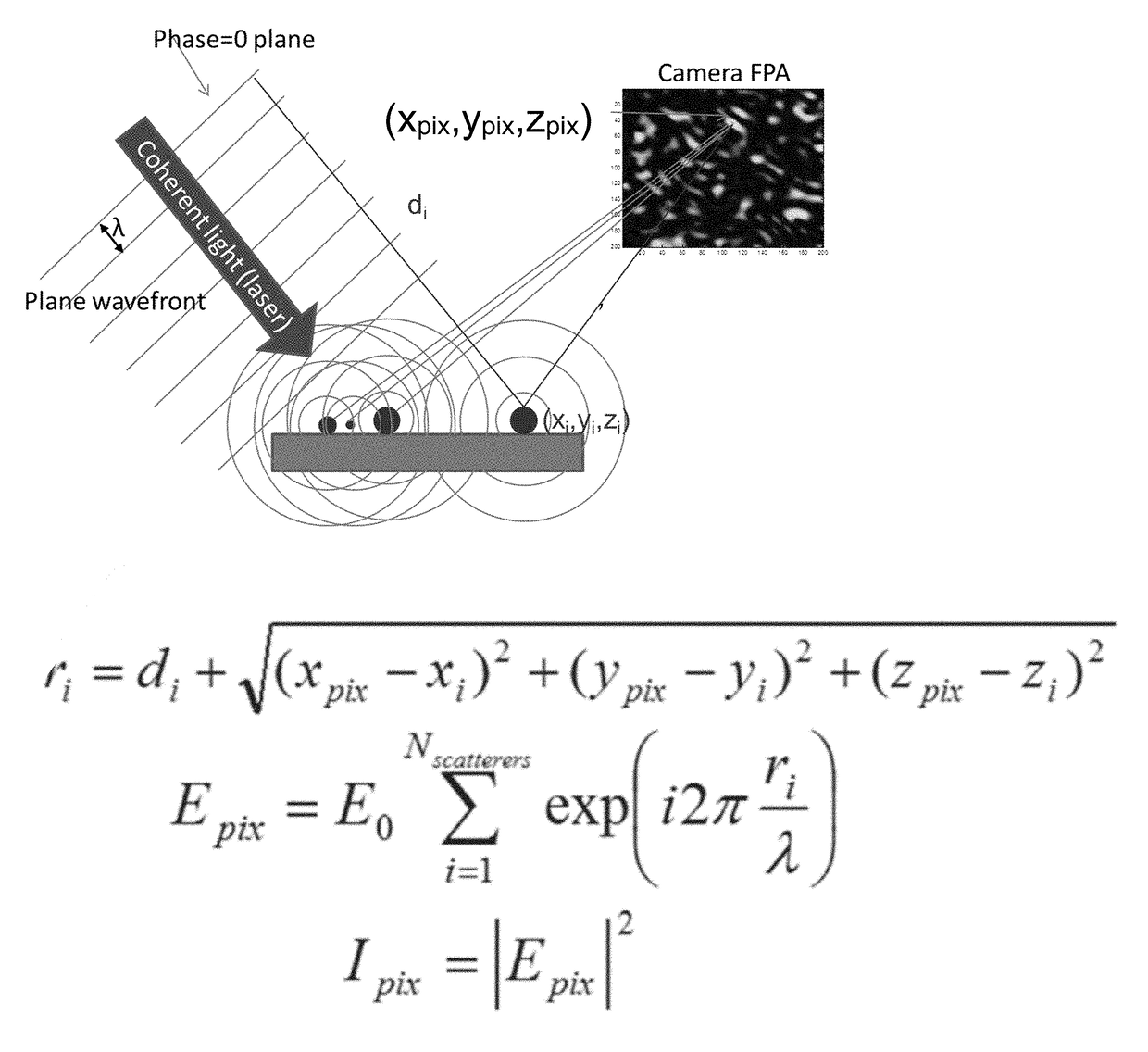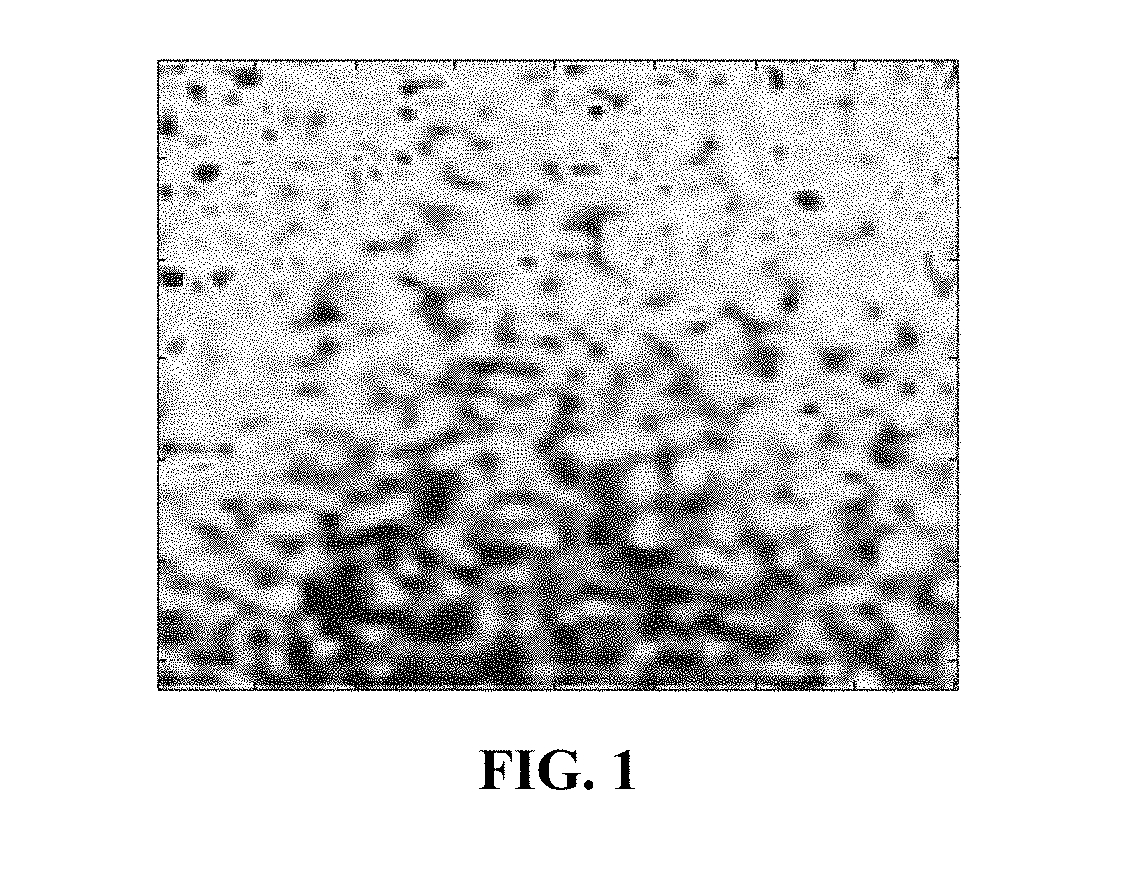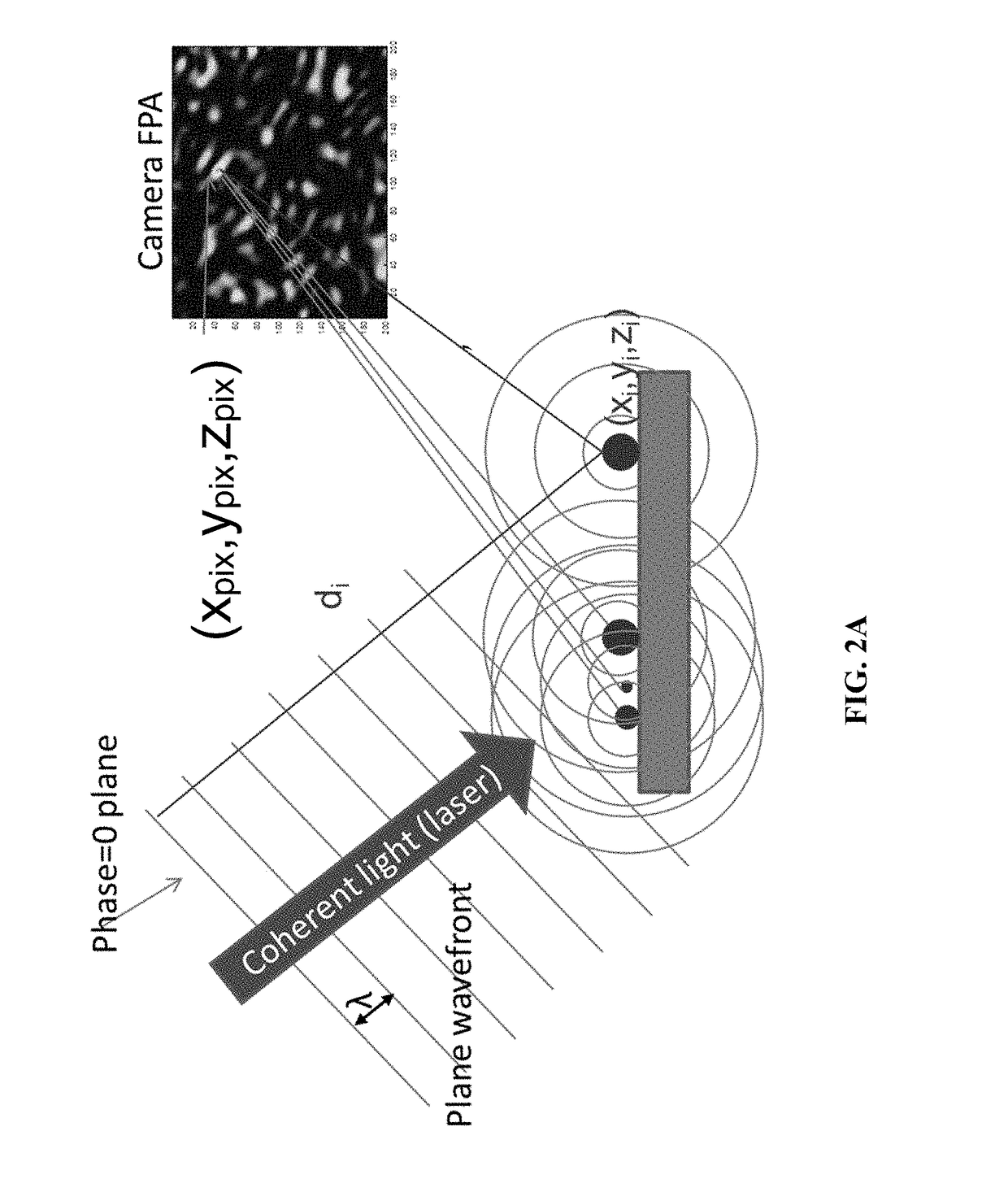Speckle reduction instrument
a technology of speckle reduction and laser, which is applied in the field of laser speckle reduction, can solve the problems of insufficient imaging brightness of conventional methods of speckle reduction, and the microscopes that use ir lasers for illumination produce “noisy” images, so as to reduce the coherence of lasers, improve image quality, and reduce speckle
- Summary
- Abstract
- Description
- Claims
- Application Information
AI Technical Summary
Benefits of technology
Problems solved by technology
Method used
Image
Examples
Embodiment Construction
[0017]The prevent invention relates to speckle reduction and a high optical throughput speckle reduction device. To increase the throughput, a cavity-based unit (see FIG. 3) was designed that captures most of the hemispheric diffused reflectance emitted by the diffuser. One mirror in the cavity has a parabolic profile and collimates all collected rays towards a flat mirror. This flat mirror has a central opening where a spinning disk diffuser is inserted. The parabolic mirror also has a central hole through which the incoming laser beam is focused onto the diffuser. Another off-center hole in the flat mirror allows a certain percentage of light to exit the unit with each pass in the cavity. This light is either coupled into an optical fiber or used free-space. Slightly defocusing the incoming laser beam or moving the spinning disk away from the plane of the flat mirror allows for control of the amount of speckle reduction and optical throughput the unit can provide.
[0018]The diffuse...
PUM
 Login to View More
Login to View More Abstract
Description
Claims
Application Information
 Login to View More
Login to View More - R&D
- Intellectual Property
- Life Sciences
- Materials
- Tech Scout
- Unparalleled Data Quality
- Higher Quality Content
- 60% Fewer Hallucinations
Browse by: Latest US Patents, China's latest patents, Technical Efficacy Thesaurus, Application Domain, Technology Topic, Popular Technical Reports.
© 2025 PatSnap. All rights reserved.Legal|Privacy policy|Modern Slavery Act Transparency Statement|Sitemap|About US| Contact US: help@patsnap.com



